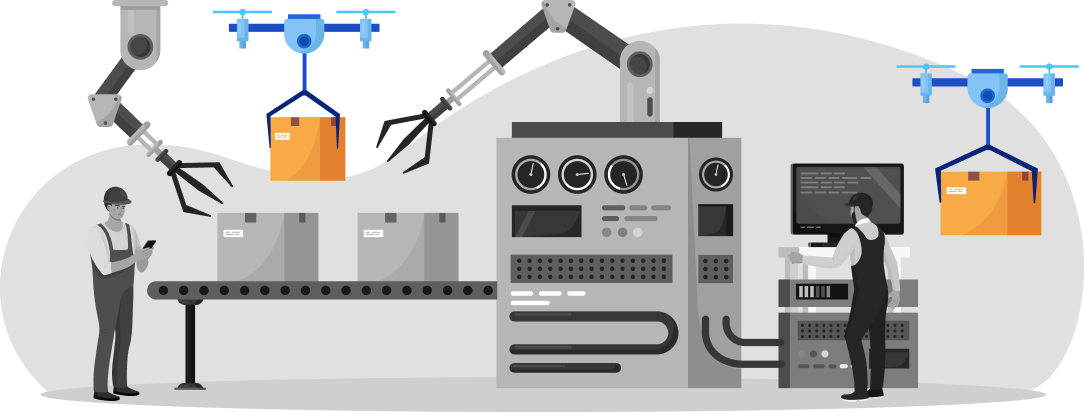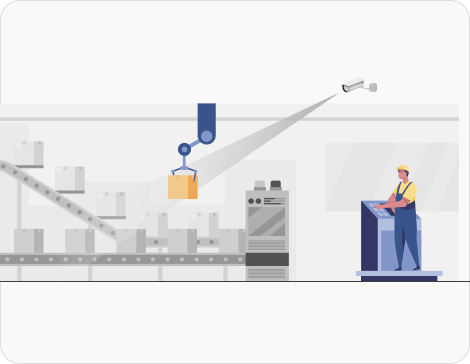Material Handling
Make material movement more efficient with AI.


Efficient handling of material is required to maintain productivity in many industries like logistics and warehousing. If not handled properly, it causes inefficiencies, errors and even safety risks. AI-powered automation and monitoring optimizes workflows, reduces financial losses and ensures safety.
Human-led management at the gates can be slow, causing congestion, errors and excessive fuel consumption.
Computer vision expedites the movement at the various entries by automating accesses, entries and gate opening/closing.
Manual handling of heavy loads can lead to increased risk of workplace injuries.
AI can detect unsafe lifting techniques, hazardous movement aur unsafe location, and issue instant alerts.
Manual tracking using outdated methods often leads to lost materials, misplacement and inefficiencies.
AI integrates with CCTV to monitor and track material movement in real-time to reduce losses.
Incorrect stacking and weight distribution can cause damage to materials, machinery or lead to safety risk.
AI can optimize load placement to prevent overloading and ensure correct stacking for maintaining structural stability.
Many industries deal with high flow of material daily and can use AI systems to enhance efficiency and cut costs.


We analyze the existing workflows and CCTV setup to integrate AI-powered handling solution.
The system is trained to understand movement patterns, load balancing and operational efficiency parameters.
Continous tracking of material flow is done to check productivity, risks and send instant alerts for optimization.
Ongoing AI insights can be used to improve handling process for further efficiency and safety.
Stay updated with the trending and most impactful tech insights. Check out the expert analyses, real-world applications, and forward-thinking ideas that shape the future of AI Computer Vision and innovation.
Walk into a semiconductor fabrication plant in 2025 and you’ll see something that looks more like a science fiction set than a factory. Robots glide across spotless cleanrooms, wafers are carried through vacuum-sealed chambers, and machines whisper in precision rhythms. Each wafer that enters the fab is a canvas on which billions of transistors will […]

CEO & Co-founder
Semiconductor fabrication plants, commonly called fabs, are some of the most complex and expensive factories ever built. Inside cleanrooms that are thousands of times cleaner than a hospital operating room, wafers of silicon are transformed into chips that power the world’s smartphones, cars, medical devices, and satellites. Every wafer goes through hundreds of steps, lithography, […]

CEO & Co-founder
Every chip in your phone, your laptop, or even in a satellite, begins as a plain slice of silicon. But before that slice can become the heart of advanced electronics, it has to go through a series of complex processes. One of the least understood, yet most critical of these, is called Chemical Mechanical Planarization, […]

CEO & Co-founder